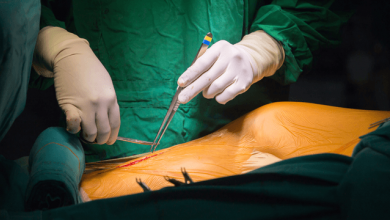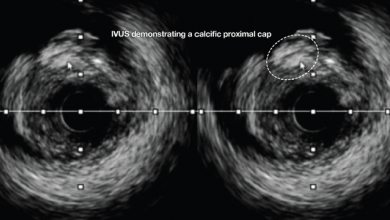Search results
Author(s):
Kalaivani Mahadevan
,
Claudia Cosgrove
,
Julian Strange
Added:
2 years ago
Author(s):
Konstantinidis Nikolaos
,
Sianos Georgios
Added:
3 years ago
Saphenous vein grafts (SVGs), despite their inherent inferiority to arterial conduits, still remain the type of grafts most commonly used during coronary artery bypass grafting (CABG).1 The natural and post-interventional biological behaviour of SVGs differ from that of native coronary vessels, increasing the risk of restenosis.2 SVG disease after CABG is a strong predictor of mortality.3 In a…
View more
Author(s):
Axel Schmermund
,
Holger Eggebrecht
Added:
3 years ago
It is estimated that 15-20 % of all coronary interventional procedures involve side branches.1 Side branches are frequently related to periprocedural complications. Side branch occlusion or compromise appears to be the underlying cause of approximately 30 % of periprocedural myocardial infarctions.2 Periprocedural infarction in turn is an important predictor of midterm mortality3. Considering any…
View more
Author(s):
Alfredo Galassi
,
Aaron Grantham
,
David Kandzari
,
et al
Added:
3 years ago
Section A
Techniques for Chronic Total Occlusions Revascularisation
Access Route, Guiding Catheter Selection and Contralateral Injection
The femoral approach is the preferred access route by most operators. However, the radial approach might be chosen because of severe peripheral vascular disease, operator’s preference or for contralateral injection. The guiding principle of access selection is…
View more
Author(s):
Karel M Van Praet
,
Markus Kofler
,
Timo Z Nazari Shafti
,
et al
Added:
2 years ago
Author(s):
Nicolaus Reifart
Added:
3 years ago
Definition and Prevalence
Chronic coronary occlusions (CTOs) are defifined as lesions with Thrombolysis in Myocardial Infarction (TIMI) 0 flow older than three months (either angiographically proven or with high clinical likelihood). 1 According to a recent Canadian registry, CTOs are detected in about 30 % of patients with symptomatic coronary artery diseases (CAD).2 Likewise a very large German…
View more
Author(s):
David Smith
,
Ahmed Hailan
,
Alexander Chase
Added:
3 years ago
Radial vs Femoral Access
In recent years several large registries and randomised controlled trials have demonstrated a mortality benefit for trans-radial over trans-femoral percutaneous coronary intervention (PCI), likely mediated by reduced bleeding complications.1–4 Building on the pioneering Japanese experience, the advent of the hybrid algorithim approach, coupled with innovative new…
View more
Author(s):
Apostolos Tzikas
,
Darren Mylotte
,
Martin Bergmann
Added:
3 years ago
Atrial fibrillation (AF), the most common arrhythmia, is associated with a significantly increased risk of morbidity and mortality due to a fivefold increase in the frequency of thromboembolic stroke.1 The gold standard treatment for the prevention of AF-related thromboembolism is oral anticoagulation (OAC), based on an individualised patient risk assessment with either the CHADS2 or the CHA2DS2…
View more
Author(s):
Vijay S Ramanath
,
Craig Thompson
Added:
3 years ago
Coronary chronic total occlusions (CTOs) remain one of the most challenging percutaneous challenges in interventional cardiology, with technical success rates of only ~50–70 %.1,2 This lesion subset often poses the greatest risk and often requires techniques and equipment not typically utilised for more acute coronary lesions. However, successful percutaneous CTO revascularisation is associated…
View more
Author(s):
Claudia Cosgrove
,
Kalaivani Mahadevan
,
James Spratt
,
et al
Added:
2 years ago












